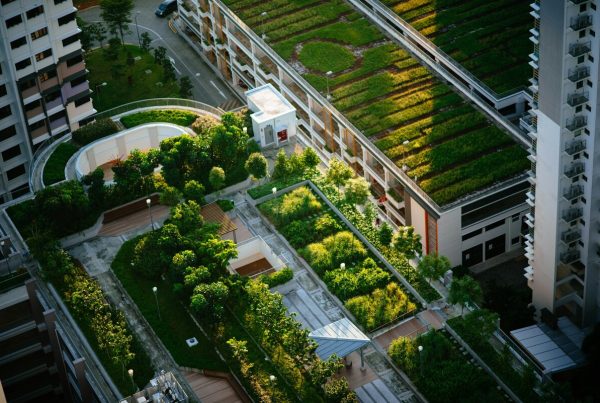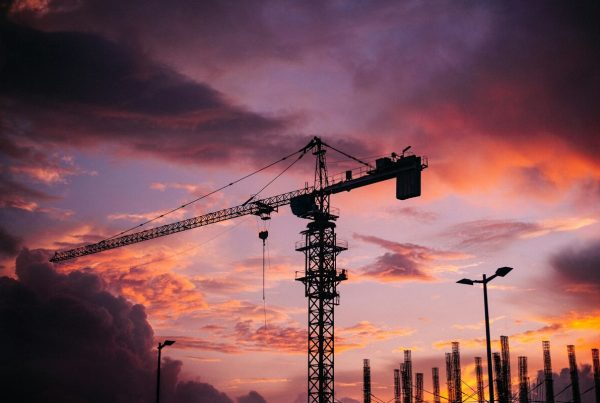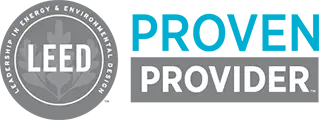Sustainability is no longer just a trend in modern construction — it’s a necessity. As the built environment continues to account for a significant share of global energy use and carbon emissions, the industry shifts toward more efficient design solutions. LEED v5 — the latest Leadership in Energy and Environmental Design certification update — sets a higher bar for efficiency and indoor environmental quality.
With stricter carbon reduction goals, enhanced renewable energy integration and a stronger focus on smart building technology, LEED v5 reshapes building design and construction. Prioritizing long-term sustainability ensures structures are better for the planet and more cost-effective for occupants and developers.
1. Next-Gen Solar Panels
Solar technology advances unprecedentedly, making renewable energy more efficient and accessible than ever. Thanks to breakthroughs in perovskite solar cells, bifacial panels and integrated photovoltaic systems, modern solar panels now deliver higher conversion rates, which allows buildings to generate more clean power with less space. With experts predicting domestic solar energy generation to surge by 75% by 2025, the shift toward self-sustaining buildings is accelerating.
These next-gen panels capture more sunlight and integrate with smart grids. They use AI-driven systems to optimize power distribution and reduce reliance on fossil fuels. Under LEED v5, high-efficiency solar technology can boost a building’s energy performance score while cutting operational costs and carbon footprints.

2. High-Performance Smart Windows
Electrochromic glass and AI-driven windows enhance building design by automatically adjusting transparency to control natural light and heat. Electrochromic glass tints or clears with a low-voltage charge, reducing glare and preventing excess heat buildup. Meanwhile, smart windows analyze real-time conditions — like sunlight levels and indoor temperatures — to optimize brightness and cooling needs.
Maximizing daylight while minimizing solar heat gain reduces HVAC demand, lowers energy costs and creates a more comfortable indoor environment. Moreover, smart windows contribute to daylighting and energy efficiency credits, which makes them a must-have for buildings aiming for higher sustainability ratings.
3. Biodegradable and Circular Economy Building Materials
Durability and waste reduction are top priorities for sustainable building materials. For example, bio-based insulation — made from natural fibers like hemp and wool — improves energy efficiency while cutting down on synthetic materials. Likewise, mycelium-based panels offer a biodegradable alternative to traditional composites, while fully recyclable materials — such as modular flooring systems and reusable concrete — help minimize landfill waste.
When choosing materials like flooring, roofing, siding, and other building envelope structures, longevity and repair costs are crucial, as frequent replacements drive up expenses and environmental impact. Investing in materials that last longer and can be repurposed reduces waste and promotes circularity in building design. Choosing products like roofing or floor tiles that can be made from recycled components also reduces material consumption. These innovations contribute to material sourcing and waste reduction credits, helping projects meet higher sustainability standards while lowering their long-term footprint.
4. Carbon-Negative Concrete Solutions
Carbon-sequestering innovations like bio-cement and Co2-injected concrete actively capture and store carbon instead of emitting it. Bio-cement — made with bacteria or algae — eliminates the need for high-emission production processes. Meanwhile, CO2-injected concrete traps carbon within its structure, preventing it from re-entering the atmosphere.
Another breakthrough, biochar-infused concrete, takes sustainability further. This charcoal-like material from organic waste can absorb up to 23% of its weight in CO2 while maintaining the strength of traditional cement. Carbon-sequestering concrete aligns with life cycle carbon assessment and material sustainability credits, which helps developers create stronger and more climate-friendly buildings.
5. AI-Optimized HVAC and Air Purification Systems
AI-powered HVAC systems make real-time, data-driven heating, cooling and ventilation adjustments. Unlike traditional systems that run on fixed schedules, automated HVAC technology enables demand-controlled ventilation, adjusting airflow based on occupancy levels. When fewer people are in a room, the system reduces heating or cooling output to conserve energy without sacrificing comfort.
Moreover, smart sensors enhance efficiency by continuously monitoring air quality, temperature and humidity, which ensures optimal ventilation while minimizing energy waste. LEED v5 incentivizes monitoring systems, which identify opportunities for additional improvements. For example, projects can earn up to 12 points for continuous indoor air monitoring. They can earn additional points by meeting air quality thresholds and reporting daily values. Water metering and leak detection systems can earn you two points and also, two points for EIS system and monitored-based commissioning.
6. Smart Water Recycling and Filtration Systems
Graywater systems repurpose water from sinks, showers and laundry for irrigation and toilet flushing, which significantly reduces freshwater demand. Rainwater harvesting collects and stores runoff for non-potable uses, cutting reliance on municipal water supplies. Meanwhile, AI-powered leak detection uses smart sensors to identify and fix leaks in real time to prevent water waste and costly damage.
These innovations help lower water bills and align with LEED v5’s strict water conservation standards, earning valuable efficiency and resource management credits. By integrating these smart solutions, buildings can minimize waste, improve sustainability scores and stay ahead of future water challenges.

7. Modular Green Roofing and Living Walls
Green roofing and living wall systems make it easier for commercial spaces to cut their carbon footprint by up to 16% through energy efficiency. Prefabricated green roofs absorb heat, reduce rooftop temperatures and combat the urban heat island effect. Meanwhile, living walls act as natural insulators, which improves indoor air quality and lowers HVAC demand.
These systems are crucial in stormwater management because they absorb excess rainwater to prevent runoff and flooding. They also foster biodiversity by creating habitats for pollinators and other wildlife. Beyond aesthetics, these innovations contribute to LEED v5’s sustainability and water efficiency credits. They help buildings achieve higher environmental performance while enhancing long-term resilience and cost savings.
Creating an Eco-Friendly Future With Sustainable Innovation
The demand for smart, sustainable solutions in engineering and architecture is stronger than ever as businesses and communities prioritize energy efficiency, resource conservation and long-term resilience. Adopting these cutting-edge innovations allows industry professionals to future-proof their projects and reduce environmental impact.












